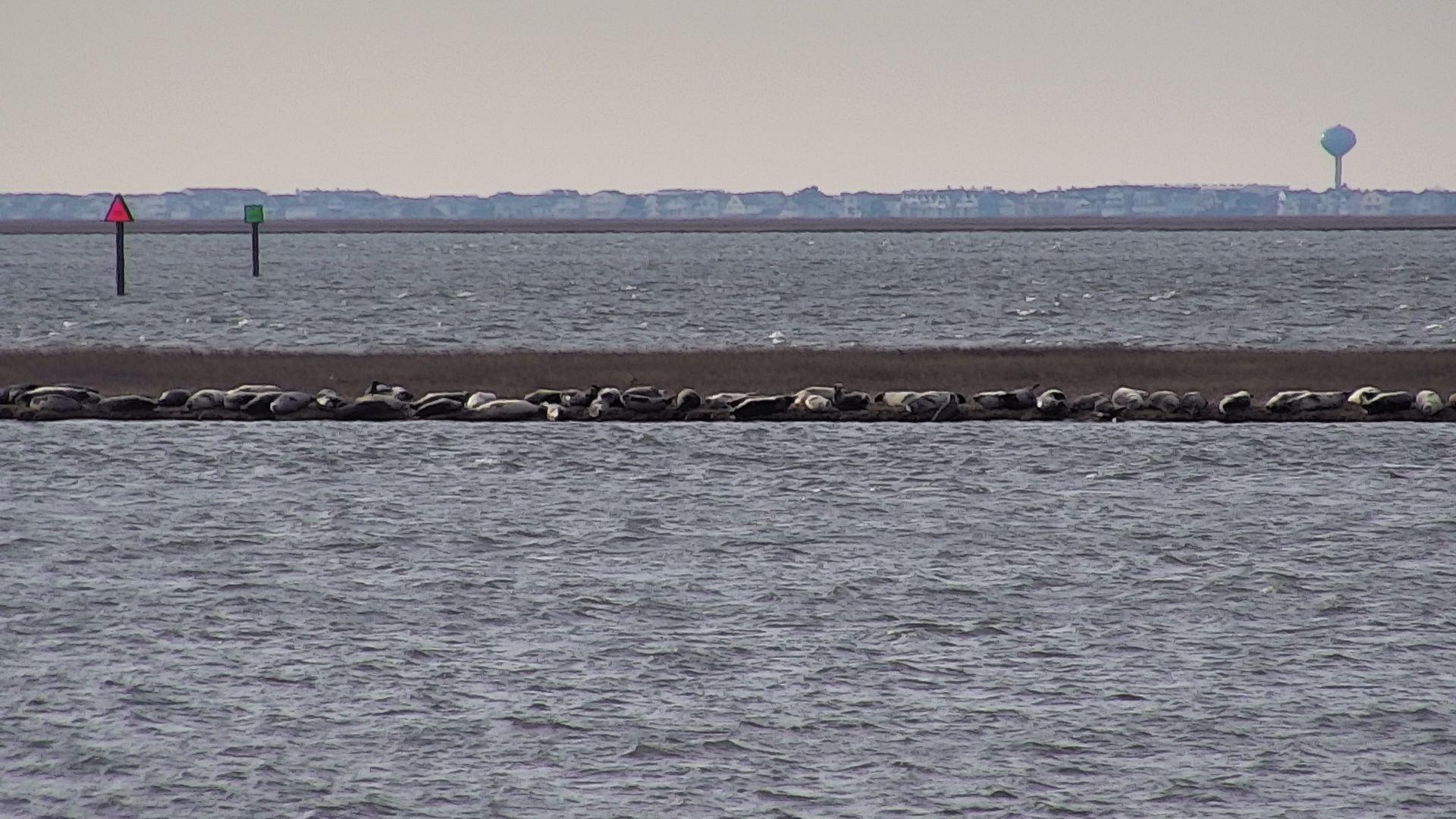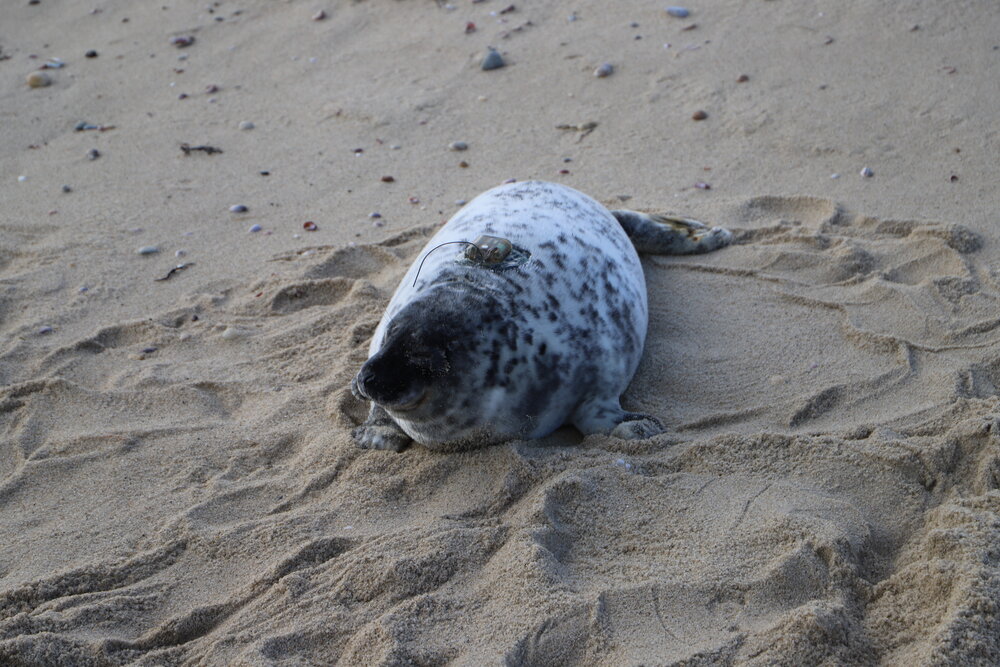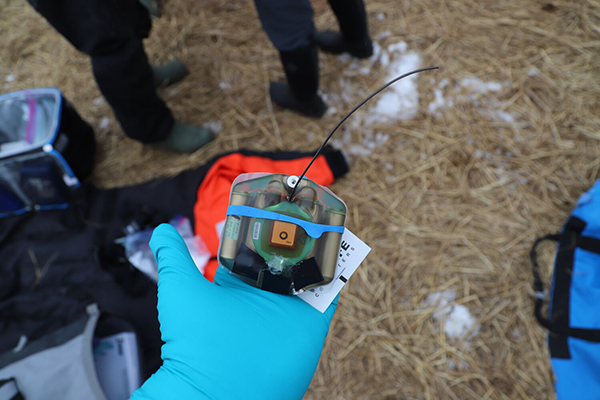
Provided/As many as 360 harbor seals gather to rest and forage in Great Bay each winter. The haul-out site is the largest in New Jersey.
Beginning in December, a nearly $700,000 grant will give faculty members, staff and students at Stockton University a unique opportunity to examine the harbor seal population through a first-ever satellite tagging operation in New Jersey.
Harbor seals have a regular seasonal home in South Jersey.
“A lot of people aren’t aware that harbor seals occur in New Jersey,” said marine mammal biologist Jackie Toth Sullivan, who’s also an adjunct faculty member at Stockton University. “This is likely because seals are here in large numbers during the winter months There aren’t that many people on the beach or on the water in January, February or March.”
For years as many as 360 seals have gathered to rest and forage in Great Bay – the largest haul-out site in New Jersey. Two other known haul-out sites include Sandy Hook State Park, which has about 100 seals, and Barnegat Light on Long Beach Island, about 30 seals. The seals begin to gather in October and November and usually stay through March or April in large numbers, she said.
Stockton personnel will work alongside tagging experts from the Atlantic Marine Conservation Society for this three-year, $682,890 grant from the New Jersey Department of Environmental Protection Research and Monitoring Initiative.
The initiative is a joint venture between the DEP and the state Bureau of Public Utilities to address the need for research and monitoring of the state’s marine resources throughout the phases of offshore wind development and operation.

A harbor seal rests on the beach.
“The purpose of the study is to, first, better understand the movement patterns of harbor seals both in New Jersey, as well as regionally,” Sullivan said. “We would like to understand if these harbor seals are using specific areas offshore for certain behaviors. For example, are windfarm lease areas being used as foraging grounds, and does this behavior change over time due to natural or anthropogenic impacts?”
Beginning in December, personnel from Stockton’s Marine Field Station, the Northeast Fisheries Science Center, Marine Mammals of Maine and the Naval Undersea Warfare Center will attach satellite tags to select seals. These tags will allow the researchers to follow the seals as they spend the winter in the mid-Atlantic area and migrate to other areas along the East Coast.
“This research will not only give scientists much needed insight into the migration behaviors of this growing population of harbor seals but will also provide Stockton University students with the opportunity to perform sophisticated data analyses and to participate in a multi-institutional study with far-reaching implications,” said Amanda Norvell, dean of Stockton’s School of Natural Sciences and Mathematics. “We are incredibly excited about this work and the scientific contributions of Professor Toth Sullivan and her colleagues.”
Various biological samples will be taken from harbor seals during the tagging process for health assessment purposes. That data will then be included with similar harbor seal studies along the mid-Atlantic and northeast coast by organizations such as the Atlantic Marine Conservation Society in New York and Massachusetts, the NOAA northeast office, Marine Mammals of Maine, the Naval Undersea Warfare Center in Rhode Island and Tufts Runstadler Lab.“That’s one of the really neat things about this project – this study goes beyond New Jersey,” Sullivan said. “There are other organizations in the northeast, mid-Atlantic and Virginia that are doing this same work in their respective region. Putting our New Jersey data into the larger data pool will give us a nice picture of coast-wide harbor seal movement and health patterns. It will fill a gap in this data set.”
While Stockton students won’t participate in the tagging effort, starting in the spring, they will be able to assess the data collected. Collecting the data before construction of offshore wind begins along New Jersey’s coast will provide researchers with a baseline to assess how seal movements, behavior and health may affected by offshore development. Data, including harbor seal habitat use and dive patterns, along with analysis of food habits through biological samples, can help researchers better understand important behavioral and ecological patterns of these animals.
“The data that can be gathered from these types of studies is unparalleled,” Sullivan said. “You can really start to piece together the life history of these animals.”

The tags will allow the researchers to follow the seals as they spend the winter in the mid-Atlantic area and migrate to other areas along the East Coast.
The grant has also provided her with an amazing opportunity to participate in the harbor seal satellite tagging process for the first time. Sullivan has previously contributed to bottlenose dolphin satellite tagging efforts, but never harbor seals.
“There are a lot of moving parts for an effort like this,” she said about the tagging process.
And certainly, getting this close to wild animals that can be as big as 6-feet-long and weigh up to 350 pounds can be remarkable.
“They are beautiful, strong, and wild creatures,” she said. “It’s humbling and awesome all at the same time.”


